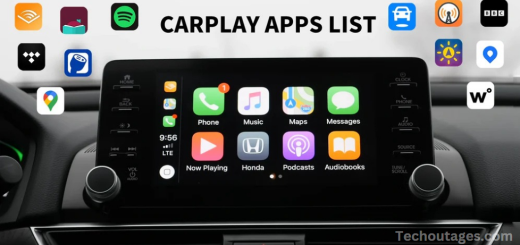Youtube New Wave Slow Downs Ad Blocker
YouTube has recently implemented measures to discourage the use of ad blockers, leading to a noticeable slowdown of the site for users who continue to block ads. This new development is part of the platform’s ongoing effort to address the growing prevalence of ad-blocking software, which many users have relied on to avoid pre-roll advertisements for years.
Ad blockers are considered a violation of YouTube’s Terms of Service, as they interfere with the platform’s primary revenue model—advertising. While users can bypass ads by disabling their ad blockers or subscribing to YouTube Premium, the latter option involves a direct payment to the platform to eliminate ads.
In response to the rise in ad blocker usage, YouTube has rolled out two key strategies. The first is a pop-up notification that appears when an ad blocker is detected, informing the user that “Ad blockers violate YouTube’s Terms of Service” and encouraging them to disable the software in order to continue viewing content. The second, more intrusive measure involves a noticeable slowdown in the site’s performance for users with active ad blockers. Many users have reported increased lag and unresponsiveness on the platform, with the issue resolving immediately once the ad blocker is disabled.
This slowdown, described by some as “suboptimal viewing,” is now being observed across a growing number of user accounts, prompting concerns about the platform’s approach to managing ad-blocking software. As a result, users face a stark choice: either disable their ad blockers, upgrade to YouTube Premium, or endure a degraded viewing experience.
The Rise of Ad Blockers
For years, ad blockers have been a popular tool for internet users seeking to avoid intrusive ads. By preventing advertisements from being displayed on websites, ad blockers improve browsing experiences, speed up page load times, and reduce exposure to potentially annoying or irrelevant content. This includes the pre-roll ads on YouTube that play before videos start, which many users find disruptive.
Despite the widespread use of ad blockers, YouTube has consistently framed their usage as a violation of its Terms of Service. As ads are a major source of revenue for the platform, YouTube has long sought to limit the effectiveness of ad-blocking software. For users who want to avoid ads without resorting to third-party tools, YouTube has always offered a paid alternative—YouTube Premium. This subscription service removes ads entirely, while also providing additional features such as offline viewing and YouTube Music access.
The Pop-Up Message: A First Step
In the battle against ad blockers, YouTube first introduced a relatively mild measure: a pop-up notification that appears when an ad blocker is detected. The message reads, “Ad blockers violate YouTube’s Terms of Service,” and encourages users to disable their ad-blocking software in order to continue watching videos. While this pop-up is an inconvenience, it doesn’t immediately prevent users from watching content—unless they comply by disabling the ad blocker.
However, as effective as this approach might have been in some cases, YouTube’s latest tactic seems to go much further in discouraging ad blocker usage.
Slowdowns: The New ‘Suboptimal Viewing’ Experience
In what appears to be a growing wave of measures against ad blockers, YouTube has begun throttling site performance for users who have ad-blocking software enabled. The result is a laggy, unresponsive browsing experience that many users have described as “suboptimal.” Reports of these slowdowns have become increasingly common, with users on Reddit and other forums sharing their experiences of sluggishness and poor site performance when their ad blockers are active.
Interestingly, these slowdowns seem to be resolved immediately when the ad blocker is disabled. This suggests that YouTube is deliberately slowing down the platform for those who use ad-blocking software as a way to push users toward disabling their tools or opting for a YouTube Premium subscription.
May you also like it:
How To Change Iphone App Colors And Theme In Ios 18
Apple Rolling Out New Firmware Update For Select Airpods Models
Apple Explains Why It Hasnt Released A Touchscreen Mac
iPad Mini 7 Rumors: What to Expect from Apple’s Next Compact Tablet
Why the Slowdown?
While YouTube has not publicly confirmed the specifics of how the slowdown works, the impact is undeniable. Some users have noted that the site’s lag affects everything from video playback to navigation between pages. It’s clear that the slowdown is not a mere technical glitch but a deliberate strategy to make the platform less usable for those who refuse to view ads.
For YouTube, this is a clear attempt to balance the interests of users and advertisers. Ad blockers directly undermine YouTube’s ad-driven business model, and with a growing number of people turning to these tools to avoid ads, the platform faces the challenge of maintaining its revenue streams. By making the experience less enjoyable for users who block ads, YouTube hopes to either convince them to disable the ad blockers or push them toward subscribing to YouTube Premium, where ads are not shown.
User Reactions
Reactions to the new measures have been mixed. Some users have expressed frustration over the increased slowdowns, seeing them as an unwelcome intrusion on their viewing experience. Others have argued that YouTube is simply protecting its business model and offering users a choice between a free, ad-supported platform or a paid, ad-free one.
However, many users view this as a heavy-handed approach, especially as ad-blocking technology has been widely available for years. There is also the concern that this trend may mark the beginning of further restrictions, leading to even more intrusive measures down the line.
The Future of Ad Blockers on YouTube
With these recent changes, it seems that YouTube is taking a firmer stance against ad blockers, and users may soon face even more aggressive methods to deter the use of these tools. It remains to be seen whether this will lead to a significant shift in user behavior, with some abandoning their ad blockers for the smoother YouTube experience or opting for YouTube Premium to enjoy ad-free content.
For now, YouTube users are left with a stark choice: tolerate the increasing frequency of ads on the free version of the platform, disable ad blockers and endure slowdowns, or pay for a Premium subscription to enjoy a seamless, ad-free experience. What’s clear, however, is that YouTube is intent on making the viewing experience less “suboptimal” for those who choose to block ads.
As this issue continues to develop, it will be interesting to see how users, advertisers, and YouTube itself navigate the evolving landscape of online video content and ad delivery.
Frequently Asked Questions
What is causing the slowdown on YouTube?
YouTube has recently begun intentionally slowing down the platform for users who have ad blockers enabled. This is a strategy designed to discourage the use of ad-blocking software, which interferes with YouTube’s primary revenue model—advertising. The slowdown affects the site’s performance, including video playback and general navigation, and it has been described by some users as a “suboptimal viewing” experience.
Is YouTube doing this for all users?
No, this slowdown only affects users who have ad blockers installed and active. If you’re using an ad blocker while browsing YouTube, you may experience lag and other performance issues. However, these slowdowns seem to disappear immediately when the ad blocker is disabled.
What happens if I disable my ad blocker?
If you disable your ad blocker, the site’s performance should return to normal. YouTube will no longer throttle your connection, and you should be able to watch videos without experiencing the lag or unresponsiveness associated with the slowdown.
Why is YouTube doing this?
YouTube’s core business model relies on advertising revenue. By using ad blockers, users are bypassing these ads, which directly impacts YouTube’s ability to generate income. The platform has long considered ad blocker usage a violation of its Terms of Service, and with the rise in ad-blocking usage, YouTube is taking stronger measures to push users toward either disabling ad blockers or subscribing to YouTube Premium, where ads are removed.
What is YouTube Premium?
YouTube Premium is a paid subscription service that offers an ad-free experience across the entire platform, as well as additional features such as offline video downloads, access to YouTube Music, and background playback on mobile devices. YouTube Premium is another way to avoid ads without using ad blockers.
Can I still use an ad blocker on YouTube?
Technically, you can still use an ad blocker on YouTube, but you will likely experience slowdowns and other performance issues as a result. YouTube has made it clear that the use of ad blockers is against its Terms of Service, and they are now actively discouraging it by impacting the viewing experience for those who continue to use such tools.
What are the effects of the slowdown?
The slowdowns have been reported to affect video loading times, video playback quality, and overall navigation on the site. The site becomes more sluggish, and in some cases, users may experience delays in interacting with the platform. These issues are resolved as soon as the ad blocker is disabled.
Can I avoid these slowdowns without subscribing to YouTube Premium?
Currently, the main ways to avoid the slowdown while still blocking ads are limited. The most direct option is to disable the ad blocker. If you want an ad-free experience without using third-party software, subscribing to YouTube Premium is the alternative.
Conclusion
YouTube’s recent implementation of slowdowns for users with active ad blockers represents a bold step in the platform’s ongoing efforts to protect its ad-driven revenue model. By intentionally throttling site performance for those avoiding ads, YouTube is pushing its users to either disable their ad blockers or pay for a YouTube Premium subscription to enjoy an uninterrupted, ad-free experience.
This move underscores YouTube’s increasing reliance on advertising as its primary revenue source, and its determination to limit the impact of ad-blocking software. While the slowdowns may frustrate users who prefer a free, ad-supported experience, YouTube’s strategy is clear: offer users a choice between tolerating ads or paying for a more seamless, premium experience.



